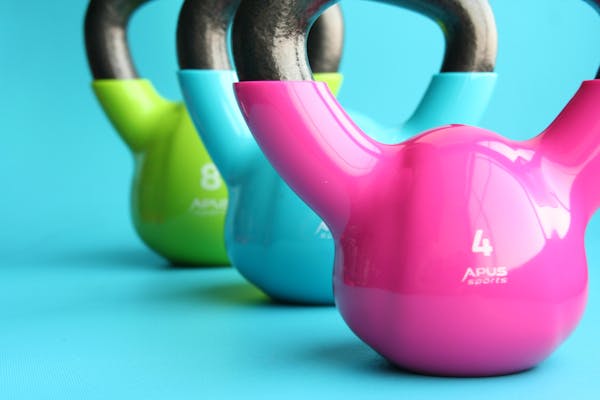
Introduction: The Importance of Planning Your Garage Gym Build
Planning your garage gym build is crucial if you want to create a space that is both functional and safe for your workouts. Many people dive headfirst into setting up their home gym without taking the time to consider important factors such as space limitations, equipment placement, and budgeting. Here is a full garage gym build that I personally made for under $1000. Here
By skipping this crucial step, you may end up making common garage gym errors that can impact the effectiveness and safety of your workout space. When it comes to garage gym safety, proper planning plays a significant role in ensuring that your workouts are injury-free.
Ventilation in the garage gym is often overlooked but essential for maintaining air quality and preventing musty odors from building up in the confined space. Additionally, considering the flooring for your home gym is crucial to protect both your equipment and yourself during intense workouts.
Choosing the right flooring material can help absorb impact, reduce noise, and provide a stable surface for heavy lifting. By carefully planning these aspects of your garage gym build, you can avoid many garage gym build mistakes that may arise from hasty decisions or lack of foresight.
Common Mistakes in Garage Gym Layout and Design
When setting up your garage gym, one of the most crucial aspects to consider is the layout and design. Many people make common garage gym errors in this area that can impact the functionality and efficiency of their workout space.
One mistake to avoid is ignoring the available space limitations. It’s easy to get carried away with buying equipment without considering how it will all fit in your garage.
Measure your space carefully and plan out where each piece of essential garage gym equipment will go to avoid overcrowding and ensure a comfortable workout environment. Another common garage gym build mistake is poor equipment placement.
Placing your gym equipment haphazardly can lead to inefficiencies in your workout flow and even safety hazards. Make sure you leave enough clearance around each piece of equipment for safe use, especially if you’re incorporating free weights or machines with moving parts.
Consider the natural flow of your workout routine when deciding where to place each item, ensuring a seamless transition between exercises without any obstructions. By paying attention to these details in your home gym layout, you can create a functional and safe workout space that maximizes both productivity and enjoyment.
Ignoring Space Limitations
When diving into the exciting world of setting up a garage gym, it’s easy to get carried away with visions of a fully equipped workout space. However, one of the most common garage gym errors that many beginners make is ignoring the limitations of the available space.
Before you start buying equipment and planning out your layout, take some time to assess the dimensions and overall layout of your garage. Consider factors like ceiling height, obstructions such as support beams or water heaters, and any other spatial constraints that could affect your gym setup.
Garage gym build mistakes often stem from unrealistic expectations about how much equipment can fit into a limited space. It’s essential to measure your available area accurately and plan out where each piece of equipment will go to ensure optimal use of space.
Don’t forget to leave enough room for proper movement during exercises and allow for adequate clearance around equipment to prevent accidents. By taking the time to consider your space limitations early on in the planning process, you’ll set yourself up for success in creating a functional and safe garage gym that meets your fitness needs without feeling cramped or cluttered.
Poor Equipment Placement
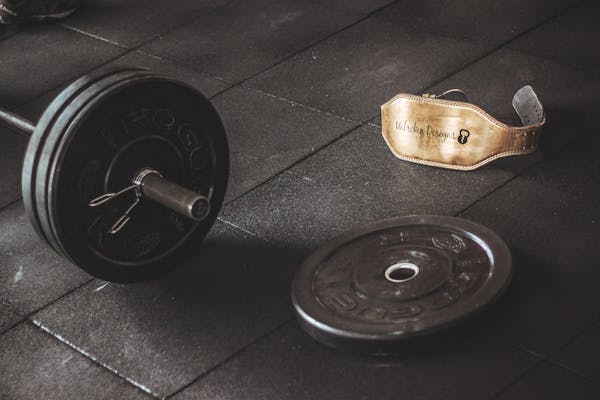
One of the most commonly overlooked aspects of setting up a garage gym is the placement of your equipment. It’s easy to get caught up in the excitement of buying new gear and forget to think about where everything will go. Poor equipment placement can not only hinder your workout efficiency but also pose safety risks.
Make sure you avoid these garage gym build mistakes by giving careful thought to how you arrange your equipment. When it comes to gym equipment placement, one key factor to consider is flow and accessibility.
You don’t want to be tripping over dumbbells or stepping on resistance bands while trying to move around your space. Keep high-traffic areas clear and ensure that there is enough space between each piece of equipment for you to move comfortably.
Another important consideration is grouping similar items together – for example, keeping all your weightlifting gear in one area and cardio machines in another can help streamline your workout routine. By taking the time to plan out the layout of your garage gym, you can create a functional and safe space that maximizes both efficiency and enjoyment.
Choosing the Wrong Equipment
When setting up your garage gym, one crucial mistake to avoid is choosing the wrong equipment. To start off on the right foot, it’s essential to think about what your fitness goals are and which exercises you enjoy doing the most. This will help you determine the type of equipment that will be most beneficial for your workouts.
For example, if you prefer weightlifting, investing in a good set of barbells, weight plates, and a squat rack would be more valuable than purchasing a cardio machine like a treadmill. Another common error is buying equipment solely based on trends or what others have in their garage gyms.
While it’s tempting to follow popular fitness fads, it’s important to remember that not all equipment will suit your specific needs and goals. Take the time to research each piece of equipment before making a purchase to ensure it aligns with your workout preferences and space availability.
Additionally, consider the quality and durability of the equipment to ensure it will last through your workouts without needing frequent replacements. By choosing the right equipment tailored to your fitness routine and preferences, you can maximize the effectiveness of your garage gym setup while avoiding unnecessary expenses and clutter.
Buying Too
Much Equipment
One of the most common garage gym build mistakes that many people make is buying too much equipment. It’s easy to get caught up in the excitement of creating your own home gym and end up purchasing more gear than you actually need or have space for.
This can not only lead to a cluttered and cramped workout area but also strain your budget unnecessarily. When it comes to garage gym budgeting, it’s essential to prioritize quality over quantity when selecting equipment.
Instead of buying every shiny new piece of gear you come across, focus on investing in high-quality essentials that align with your fitness goals. Consider what types of workouts you enjoy and tailor your equipment purchases accordingly.
Remember, having a few versatile pieces that you will actually use regularly is far more beneficial than having a room full of underutilized equipment collecting dust. By being mindful of your actual needs and staying within your budget, you can avoid the mistake of buying too much equipment for your garage gym.
Skipping Essential Equipment
When setting up your garage gym, it can be tempting to focus on flashy equipment like fancy machines and high-tech gadgets. However, skipping essential equipment in favor of the latest trends can lead to a less effective workout space.
One critical mistake to avoid is neglecting foundational items like weight plates, dumbbells, and barbells. These are the bread and butter of any strength training routine and should be prioritized in your gym setup.
Another common oversight when it comes to essential equipment is neglecting proper storage solutions. Without adequate storage for your weights, resistance bands, and other gear, your garage gym can quickly become cluttered and disorganized.
Invest in sturdy racks or shelves to keep everything organized and easily accessible during your workouts. Remember, a well-organized gym not only looks better but also enhances the overall functionality of your workout space.
Budgeting
Mistakes
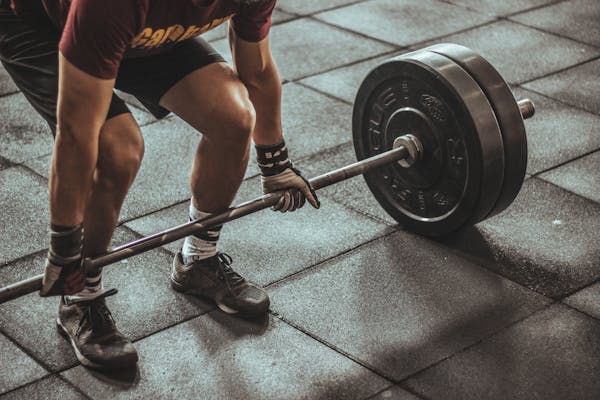
When it comes to building a garage gym, budgeting is a crucial aspect that can make or break your project. One common mistake is overspending on high-end equipment without considering if it truly aligns with your fitness goals.
While it’s tempting to invest in top-of-the-line gear, you may end up regretting the decision if it doesn’t suit your specific workout routines. It’s essential to prioritize purchasing essential garage gym equipment first before splurging on luxury items that might not be necessary for your training regimen.
Finding the right balance between quality and cost-effectiveness is key to staying within your budget while still creating a functional workout space. Another budgeting mistake to avoid is underestimating the overall costs of setting up a garage gym.
Beyond just equipment purchases, you need to factor in expenses for flooring, lighting, ventilation, and safety features. Neglecting these essential elements can lead to additional spending down the line or compromise the effectiveness and safety of your home gym environment.
It’s crucial to research and plan out all potential costs involved in your garage gym build from the beginning so that you can allocate your budget wisely and prevent any financial surprises along the way. By carefully considering each expense and prioritizing where your money goes, you’ll be able to create a well-equipped and cost-effective workout space that meets both your fitness needs and budget constraints.
Overspending on High-End Equipment
When setting up your garage gym, it’s easy to get caught up in the allure of high-end equipment. The shiny new machines and fancy gadgets can be tempting, but overspending on these items is a common mistake that many make. While top-of-the-line equipment may offer additional features and a sleek design, they often come at a premium price that may not align with your budgeting goals.
It’s essential to strike a balance between quality and cost when choosing equipment for your home gym. Before splurging on high-end equipment, consider your fitness goals and how the equipment will help you achieve them.
Will investing in expensive machines significantly enhance your workouts, or are there more cost-effective alternatives that can provide a similar benefit? It’s important to prioritize functionality over aesthetics when selecting gym equipment.
Remember, the best lighting for a garage gym won’t necessarily come from the most expensive fixtures, and proper ventilation in a garage gym doesn’t have to break the bank either. By carefully evaluating the value each piece of high-end equipment adds to your workout routine, you can avoid overspending and create a well-equipped home gym that meets your needs without draining your wallet.
Underestimating Costs
One of the most common garage gym build mistakes is underestimating the costs involved in setting up your home workout space. It’s easy to get caught up in the excitement of building your dream gym and forget to factor in all the expenses.
From equipment prices to flooring materials, lighting fixtures, and even storage solutions, the costs can add up quickly. Many DIY enthusiasts fall into the trap of thinking they can create a fully-equipped gym on a shoestring budget, only to realize halfway through that they need to make significant compromises.
When budgeting for your garage gym, it’s crucial to do thorough research on equipment prices, installation costs, and any additional accessories you may need. Don’t forget about hidden expenses like shipping fees, taxes, and potential installation charges if you’re not handy with tools.
It’s also wise to set aside a contingency fund for unexpected expenses that may arise during the build process. By being realistic about your budget from the start and planning accordingly, you can avoid financial stress down the road and ensure that your garage gym project stays on track without compromising safety or quality.
Neglecting Flooring and Surface Considerations
Neglecting Flooring and Surface Considerations When setting up your garage gym, it can be easy to overlook the importance of proper flooring and surface considerations. Many beginners make the mistake of thinking any old floor will do, but this can lead to serious issues down the line.
Choosing the right flooring for your home gym is crucial for both safety and performance. You want a surface that is durable enough to withstand heavy equipment and high-impact exercises, yet provides enough cushioning to protect your joints.
One common error people make is opting for cheap or inadequate flooring options that quickly wear down under the stress of regular workouts. Investing in high-quality rubber or foam flooring designed specifically for home gyms can save you money in the long run by preventing damage to your equipment and reducing the risk of injury.
Additionally, consider factors like ease of cleaning and maintenance when selecting your gym flooring. A well-maintained floor not only looks better but also contributes to a more hygienic workout environment.
Inadequate Lighting and Ventilation
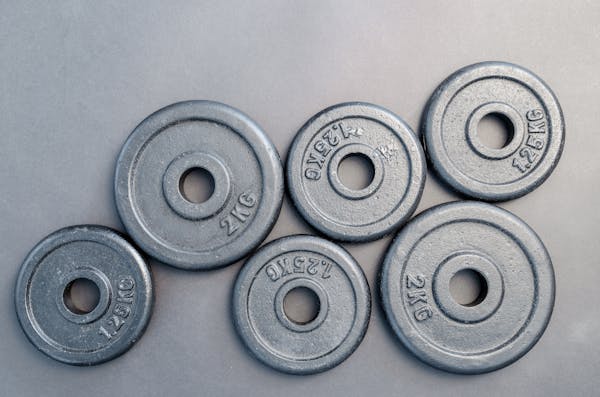
One common garage gym error that many people make is neglecting the importance of adequate lighting and ventilation in their workout space. Proper lighting is crucial for ensuring your safety and performance during workouts, as dim or uneven lighting can lead to accidents or strain your eyes. When setting up your garage gym, consider installing overhead LED lights or track lighting to ensure consistent brightness across the space.
Additionally, natural light sources such as windows or skylights can help create a more inviting and energizing atmosphere for your workouts. Ventilation in a garage gym is often overlooked but plays a significant role in maintaining a comfortable and healthy environment.
Without proper ventilation, the air in your gym can become stale and stuffy, leading to discomfort and potential health issues. To improve airflow in your garage gym, consider installing fans or an exhaust system to circulate fresh air and remove any excess moisture or odors.
Adding vents or windows that can be opened during workouts can also help regulate temperature and keep the space feeling airy and breathable. By paying attention to these details, you can create a well-lit and well-ventilated garage gym that enhances your overall exercise experience.
Overlooking Safety and Maintenance
When it comes to setting up your garage gym, safety should always be a top priority. One of the most common garage gym build mistakes is overlooking safety considerations. Make sure to secure all equipment properly to prevent accidents or injuries.
This includes anchoring heavy items like power racks and weight benches to the floor or wall. Additionally, check the weight capacity of your floors to ensure they can support the equipment you plan to use.
Another crucial aspect that is often neglected is maintenance. Regularly inspect your equipment for wear and tear, loose bolts, or any other issues that could compromise safety.
Keep an eye on the flooring for home gym as well – make sure it’s still in good condition and provides adequate cushioning for activities like lifting weights or doing cardio exercises. Proper maintenance not only extends the lifespan of your equipment but also helps prevent accidents that could result from neglected upkeep.
Ignoring the Weight Capacity of Floors
Many garage gym enthusiasts overlook a crucial aspect when setting up their workout space – the weight capacity of their floors. It’s easy to get caught up in choosing the best gym equipment and planning the layout without considering if the floor can handle the load.
Before you start loading your garage with heavy weights and equipment, take some time to assess the structural integrity of your floor. Weight distribution is key when it comes to setting up a safe and functional garage gym.
Consider where you plan to place your heaviest equipment, such as a power rack or weightlifting platform. These pieces can exert a significant amount of pressure on your floor, especially if they are concentrated in one area.
Depending on the type of flooring in your garage, you may need to reinforce certain areas or distribute the weight more evenly to prevent damage over time. By being mindful of weight capacity limitations and properly distributing the load, you can avoid costly repairs and ensure a stable foundation for your workouts.
Failing to Secure Equipment Properly
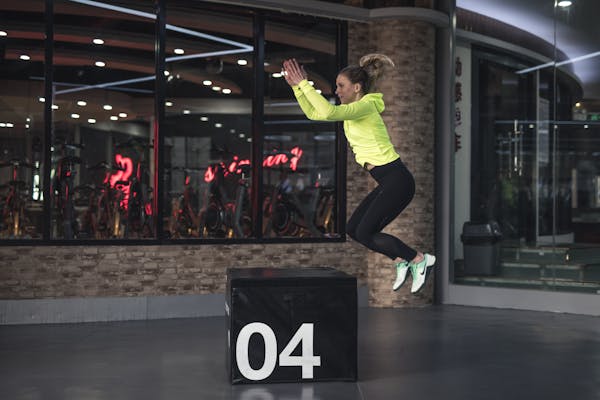
One of the most critical aspects of setting up a garage gym is ensuring that all your equipment is properly secured. Failing to do so can lead to accidents and injuries during workouts. Make sure to anchor any heavy equipment like squat racks, weight benches, and pull-up bars securely to the walls or floor.
Use appropriate hardware and follow the manufacturer’s guidelines for installation to prevent any mishaps. When it comes to gym equipment placement, especially heavier items like barbells and weight plates, ensure they are stored or racked safely when not in use.
Avoid leaving weights lying around on the floor, as they can become tripping hazards or cause damage to the flooring in your home gym. Invest in storage solutions like weight trees or shelves to keep your space organized and free from clutter.
Additionally, consider using mats or protective flooring for home gyms under heavy equipment to dampen noise and protect both your floors and equipment from damage. By taking these precautions, you can create a safe and efficient workout space for all your fitness needs.
Not Planning for Future Expansion
When setting up your garage gym, it’s crucial to not only think about your current fitness routine but also consider potential future needs. Not planning for future expansion is a common garage gym error that can lead to frustration and limitations down the line.
To avoid this mistake, take some time to envision how your fitness goals may evolve over time and plan your equipment purchases and layout accordingly. One way to plan for future expansion is to invest in versatile and multifunctional equipment that can adapt to different workout styles.
Essential garage gym equipment like adjustable dumbbells, resistance bands, or a power rack with various attachments can allow you to diversify your training as you progress. Additionally, leave some open space in your layout for potential new additions or modifications.
By considering the flexibility of your setup from the beginning, you can save yourself the hassle of having to reorganize or upgrade later on. Planning ahead not only ensures that your garage gym remains functional but also provides room for growth and experimentation as you continue on your fitness journey.
Tips for Avoiding Common Garage Gym Mistakes
When it comes to avoiding common garage gym build mistakes, one of the best tips is to carefully plan and research before making any purchases. Take the time to assess your space, consider your fitness goals, and prioritize the essential garage gym equipment you’ll need. This will help you avoid buying unnecessary items that can clutter your space and drain your budget.
Additionally, don’t forget to measure your space accurately before purchasing any large equipment to ensure it fits properly. Another important tip for avoiding garage gym mistakes is to invest in proper flooring for your home gym.
Choosing the right flooring not only protects your equipment and floors but also enhances safety during workouts. Look for durable options like rubber or foam tiles that provide cushioning and support for heavy weightlifting exercises.
Proper flooring can also help reduce noise and vibration, creating a more pleasant workout environment. So, don’t overlook this crucial aspect when setting up your garage gym!
Conclusion: Building a Functional and Safe Garage Gym
Creating a functional and safe garage gym is all about balance and foresight. By carefully considering your space limitations and choosing the right equipment for your needs, you can avoid many common garage gym build mistakes. Remember to prioritize safety by securing your equipment properly, checking weight capacities, and maintaining a clean environment.
When it comes to budgeting for your garage gym, take the time to research costs and plan accordingly. Investing in essential garage gym equipment will set a solid foundation for your workouts without breaking the bank.
Pay attention to flooring options that offer both durability and shock absorption to protect both your equipment and yourself during intense workouts. Proper lighting and ventilation play crucial roles in creating a comfortable workout space that motivates you to keep coming back.
Overall, with attention to detail and a bit of planning, you can transform your garage into a functional and safe workout haven. Embrace the process of building your dream home gym, learn from common garage gym errors, and enjoy the journey towards a healthier lifestyle in the comfort of your own space.